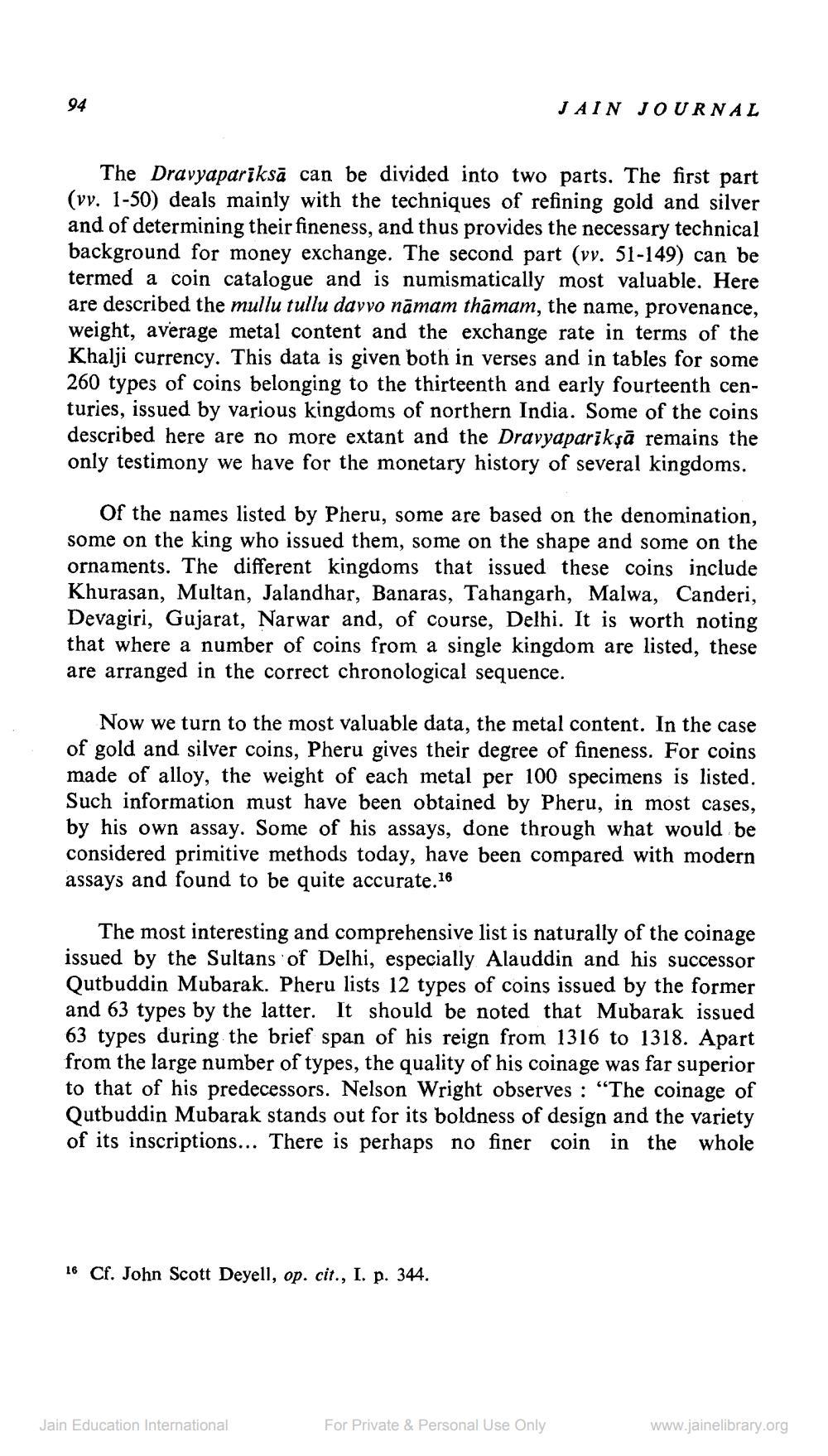________________
94
JAIN JOURNAL
The Dravyapariksā can be divided into two parts. The first part (vv. 1-50) deals mainly with the techniques of refining gold and silver and of determining their fineness, and thus provides the necessary technical background for money exchange. The second part (vv. 51-149) can be termed a coin catalogue and is numismatically most valuable. Here are described the mullu tullu davvo nāmam thāmam, the name, provenance, weight, average metal content and the exchange rate in terms of the Khalji currency. This data is given both in verses and in tables for some 260 types of coins belonging to the thirteenth and early fourteenth centuries, issued by various kingdoms of northern India. Some of the coins described here are no more extant and the Dravyaparikşā remains the only testimony we have for the monetary history of several kingdoms.
Of the names listed by Pheru, some are based on the denomination, some on the king who issued them, some on the shape and some on the ornaments. The different kingdoms that issued these coins include Khurasan, Multan, Jalandhar, Banaras, Tahangarh, Malwa, Canderi, Devagiri, Gujarat, Narwar and, of course, Delhi. It is worth noting that where a number of coins from a single kingdom are listed, these are arranged in the correct chronological sequence.
Now we turn to the most valuable data, the metal content. In the case of gold and silver coins, Pheru gives their degree of fineness. For coins made of alloy, the weight of each metal per 100 specimens is listed. Such information must have been obtained by Pheru, in most cases, by his own assay. Some of his assays, done through what would be considered primitive methods today, have been compared with modern assays and found to be quite accurate.16
The most interesting and comprehensive list is naturally of the coinage issued by the Sultans of Delhi, especially Alauddin and his successor Qutbuddin Mubarak. Pheru lists 12 types of coins issued by the former and 63 types by the latter. It should be noted that Mubarak issued 63 types during the brief span of his reign from 1316 to 1318. Apart from the large number of types, the quality of his coinage was far superior to that of his predecessors. Nelson Wright observes : "The coinage of Qutbuddin Mubarak stands out for its boldness of design and the variety of its inscriptions... There is perhaps no finer coin in the whole
16 Cf. John Scott Deyell, op. cit., I. p. 344.
Jain Education International
For Private & Personal Use Only
www.jainelibrary.org




